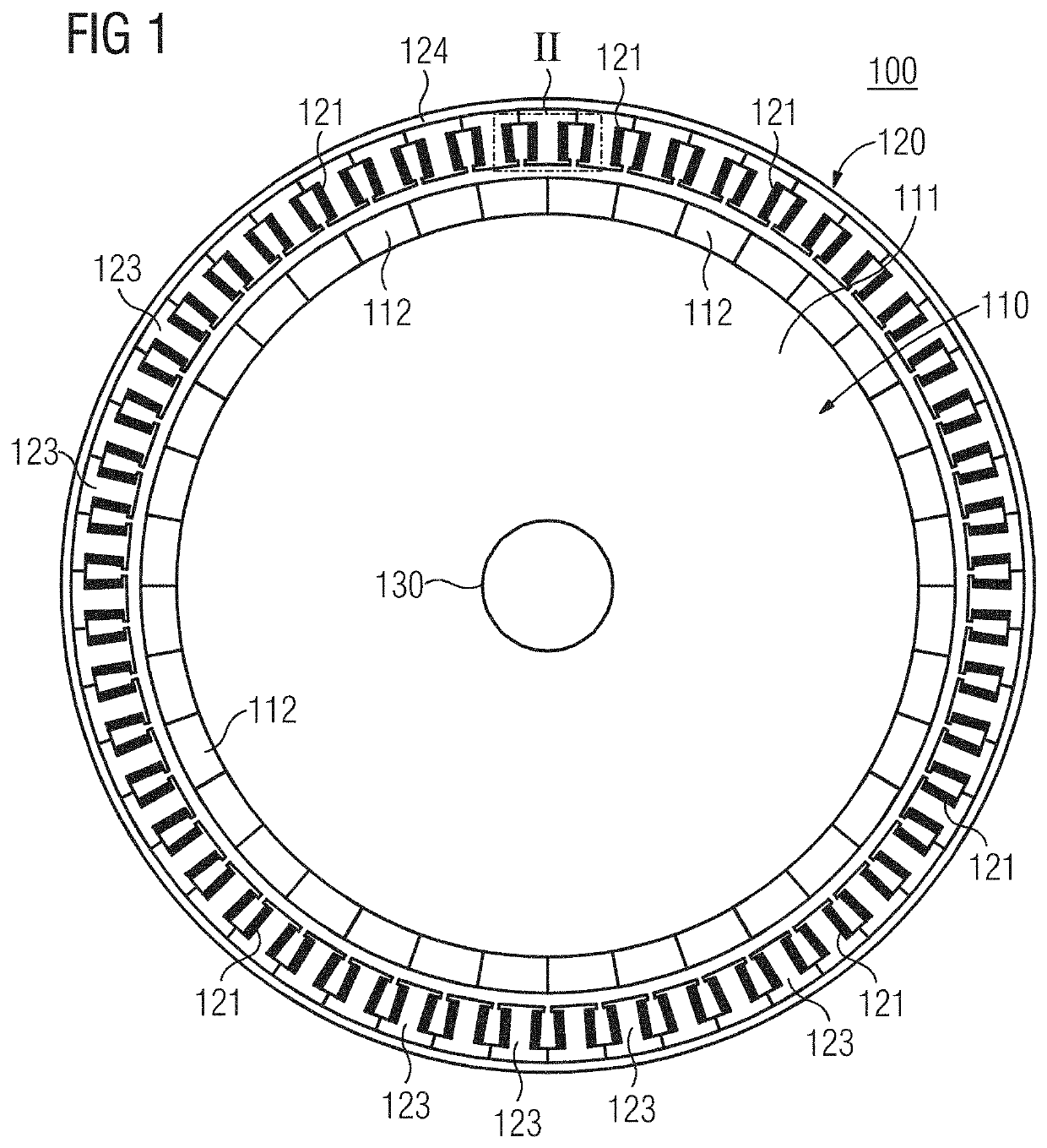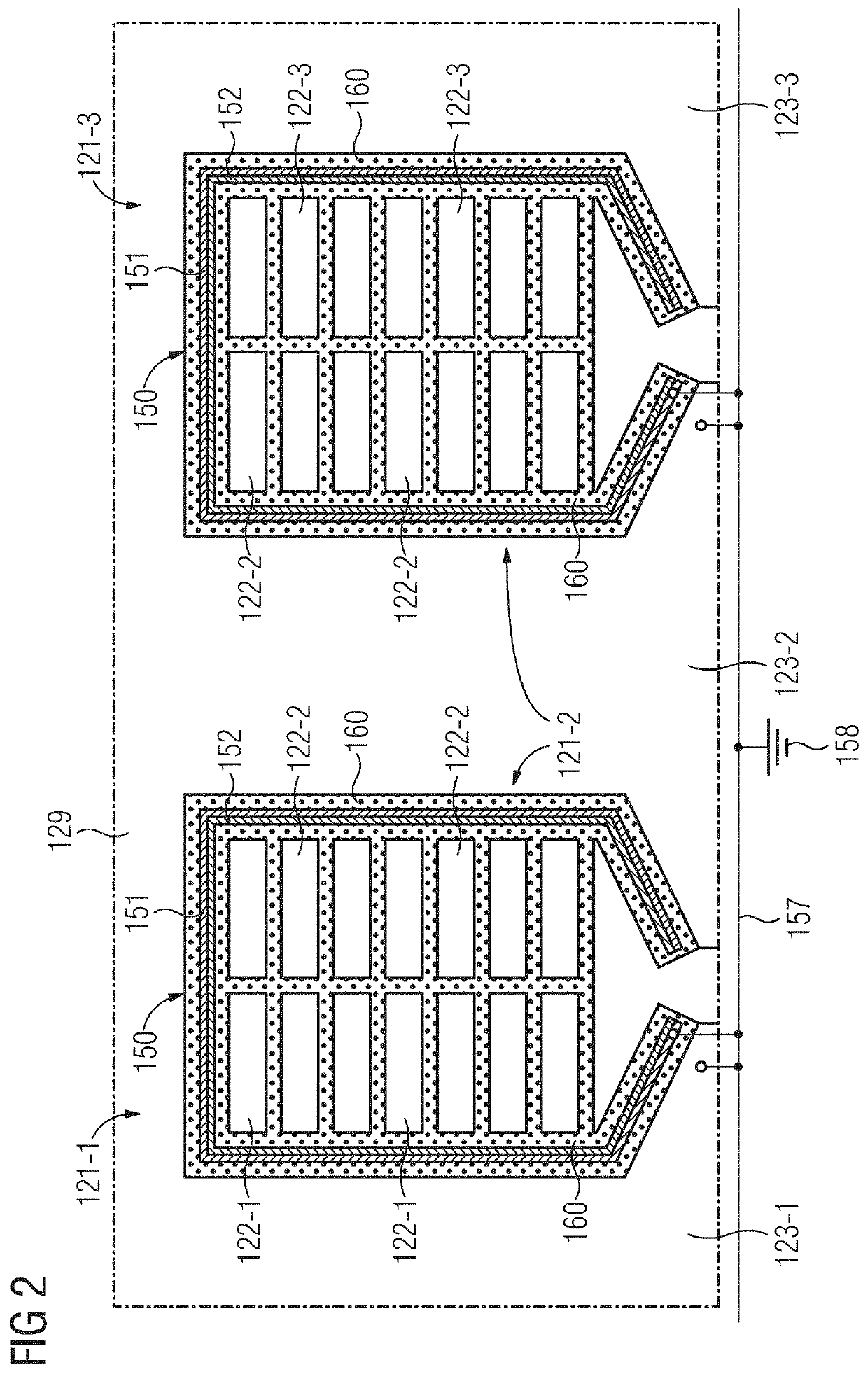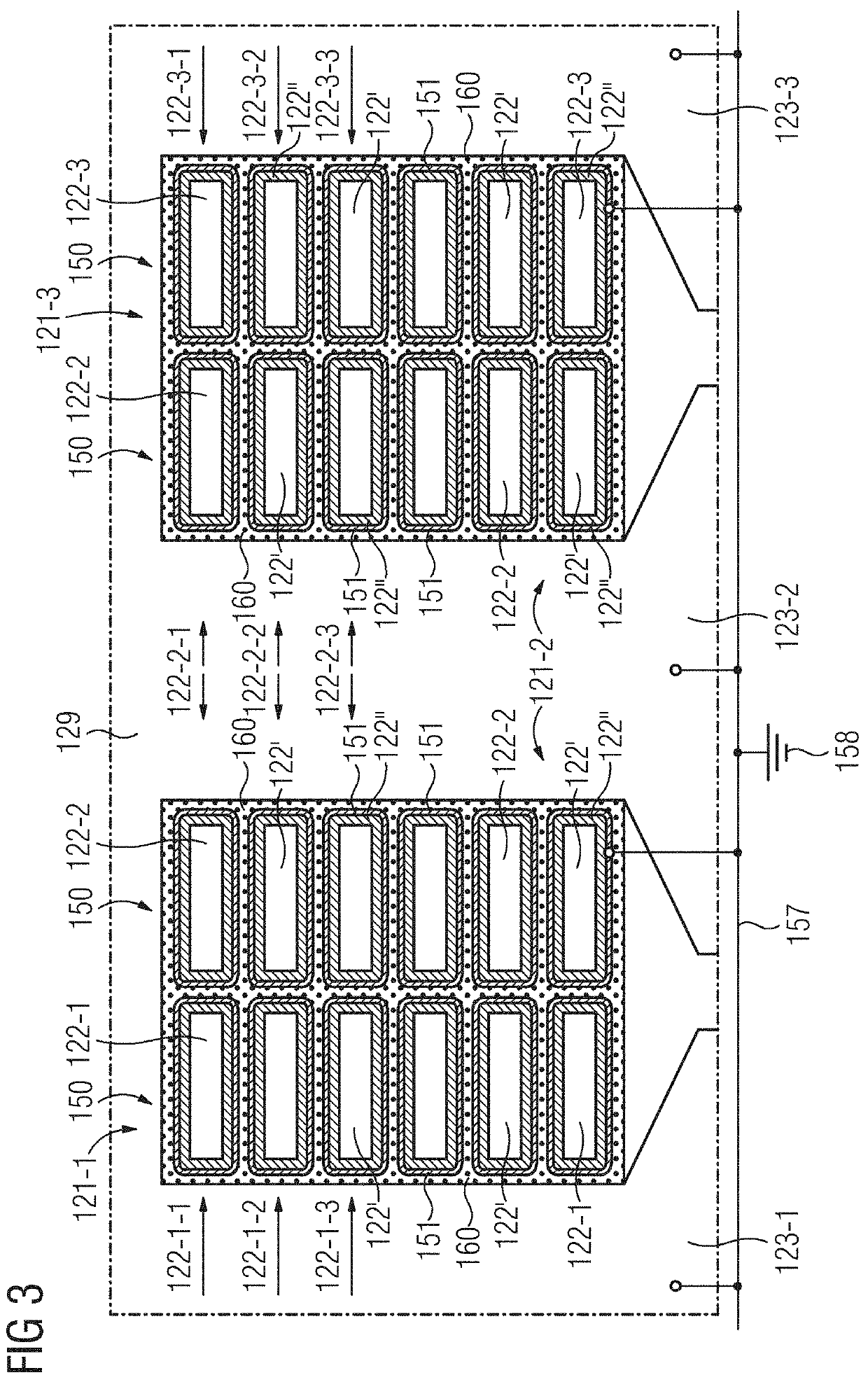Coil arrangement for an electrical machine
a coil arrangement and electric machine technology, applied in the field of electric machines, can solve the problems of increasing the stress of electrical insulation, insulation system, and increasing the risk of system failure, so as to improve the removal of heat from the winding, increase the thermal conductivity of the impregnating compound, and ensure the effect of electrical conductivity
- Summary
- Abstract
- Description
- Claims
- Application Information
AI Technical Summary
Benefits of technology
Problems solved by technology
Method used
Image
Examples
first embodiment
[0077]In the first embodiment, shown in FIG. 2, the insulating arrangement 150 is formed as a slot insulation. The slot insulation 150 is formed in a film-like or sheet-like manner, and therefore extends in principle, (e.g., when it has not yet been placed into the respective slot), in two spatial directions and has a comparatively negligible extent in the third spatial direction. The slot insulation 150 includes a first, electrically conductive layer 151 and a second, electrically insulating layer 152. In this example, the first layer 151, representing a conductive surface, has been applied to the second layer 152. The second layer 152 may include a thermoplastic. In this case, the slot insulation 150 is arranged in the interspace between the tooth 123-i and the coil 121-i wound onto this tooth 123-i in such a way that the first, electrically conductive layer 151 is facing the tooth 123-i and the second, electrically insulating layer 152 is facing the coil 121-i. Furthermore, the f...
third embodiment
[0084]To illustrate the functional mode, in particular of the third embodiment, FIG. 5 shows the cutout denoted in FIG. 4 by “V” and marked there by a dashed line. If the wire insulation 122″ may lift off from the wire 122′, for example, due to aging or high mechanical stressing at individual points, a local air inclusion 170 may form at the corresponding point. Because the further layer 155 is arranged completely surrounding the wire 122′, the electrical contact between the wire 122′ and the further layer 155 remains ensured, so that the function of the insulating arrangement 150 with regard to the avoidance of partial discharges is also ensured in this case. In other words, the occurrence of partial discharges due to delamination of the wire insulation 122″ from the wire 122′ may therefore be additionally prevented by the additional conductive surface in the form of the further layer 155 between the wire insulation 122″ and the wire 122′.
[0085]FIG. 6 shows a fourth embodiment of t...
fourth embodiment
[0087]In the third and also in the fourth embodiment, which are shown in FIGS. 4-6, the insulating arrangement 150 in each case includes an electrically insulating layer 122″ or 152, respectively. On both sides of this insulating layer 122″ or 152 there is arranged in each case an electrically conductive layer 151, 155 or 151, 153, respectively. By such an electrically conductive coating on both sides of the insulating layer 122″ or 152, both the region between the insulation 122″ or 152 and the laminated core 129, and that between the insulating arrangement 150 and the coil conductor 122 is kept free from partial discharges.
[0088]For the production or the construction of the stator 120 on the basis of one of the second to fourth embodiments, the coil conductor 122 insulated in this way may be pre-formed and inserted into the slot or be wound directly onto the tooth 123. As a result, the electrically conductive first layer 151 located on the respective outer side of the coil conduct...
PUM
 Login to View More
Login to View More Abstract
Description
Claims
Application Information
 Login to View More
Login to View More - R&D
- Intellectual Property
- Life Sciences
- Materials
- Tech Scout
- Unparalleled Data Quality
- Higher Quality Content
- 60% Fewer Hallucinations
Browse by: Latest US Patents, China's latest patents, Technical Efficacy Thesaurus, Application Domain, Technology Topic, Popular Technical Reports.
© 2025 PatSnap. All rights reserved.Legal|Privacy policy|Modern Slavery Act Transparency Statement|Sitemap|About US| Contact US: help@patsnap.com



